SENIOR CORRESPONDENT - NEW YORK, NY. Manu is an avid air traveler, private pilot, and a dedicated AvGeek. He enjoys writing about aviation from a millennial's perspective, and co-manages AirlineReporter's social media and video projects. His day job is as a doctor in NYC.
https://www.airlinereporter.com
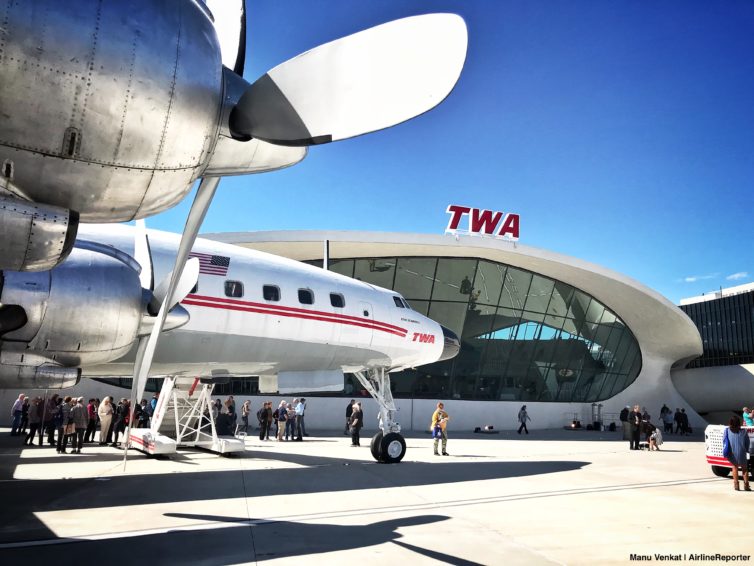
Order
Is there a list of AvGeek wonders of the world? Probably not, but if there was, the new TWA Hotel at New York’s JFK International Airport was trying from the outset to make it onto the list. Initially I was worried that the project — build around the historic TWA Terminal at JFK — might be a victim of stratospheric expectations. But from the moment I walked into the beautifully restored building it was clear that the attraction was everything we all wanted it to be, and more.
Just like the beautifully restored Lockheed Constellation sitting on the premises, the TWA Hotel fires on all cylinders. It’s as much a museum as a hotel, with tons of exhibits about the jet age’s golden years. The staff is having a total blast, with 60’s-style uniforms to match. There’s even an infinity pool on the roof with an incredible view of the ramp and runways. I mean seriously, how can you beat all that??
If by this point you’re not itching to click the “Read More” button — and see all the photos and videos we took during our visit — we’re questioning your AvGeek credentials. Enjoy!
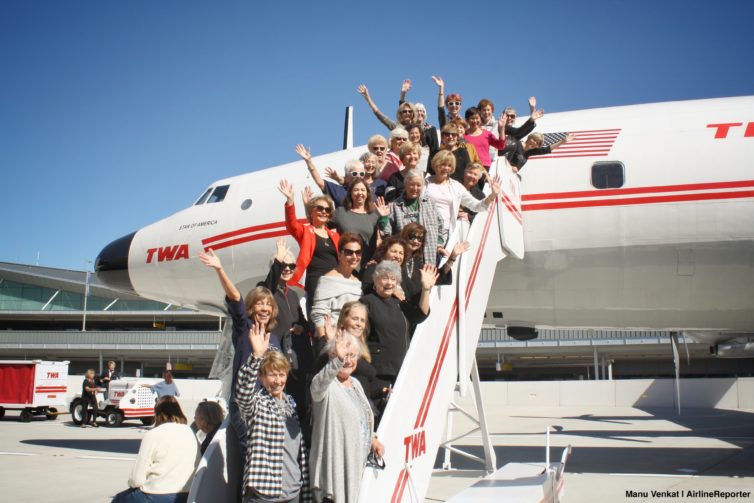
It’s been almost twenty years since TWA folded, but some of its employees still stay in touch. Every year, the Silver Wings organization of former TWA flight attendants hosts a get-together where they celebrate their shared history. The meetings usually rotate between U.S. cities, and this year there was only one logical choice: New York, thanks to the awesome new TWA Hotel that opened in May. If you’re one of the few AvGeeks out there who haven’t heard about it, the hotel is built around Eero Saarinen’s iconic TWA terminal at JFK and features historical displays, a rooftop pool with tarmac views, and more.
We got to join in for the Silver Wings meetup, and it was as awesome as we were hoping it would be. The turnout was incredible, and attendees were having a blast touring their old stomping grounds and seeing the old TWA terminal brought back to life.
Read on for a recap of the weekend and an insider look at the TWA Hotel, which — spoiler alert — is everything an AvGeek would want it to be.
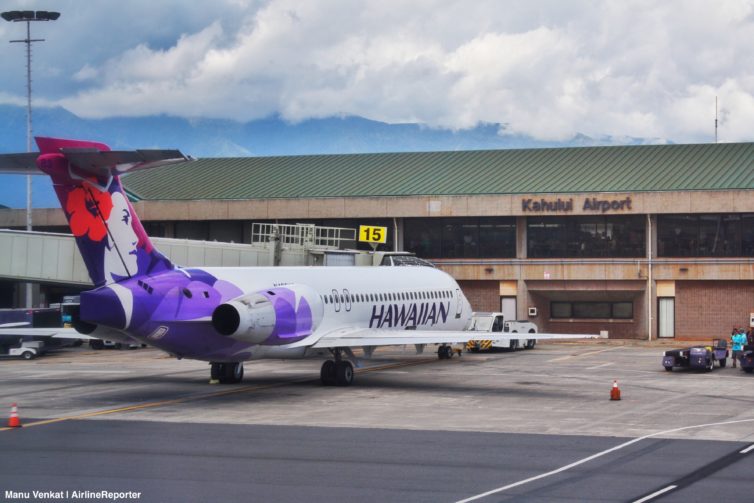
You’re sitting by the gate at the airport, watching the clock tick closer to your flight’s boarding time. Suddenly, there’s a *ding* overhead as the PA system comes on. Your stress levels rise. You know what’s coming. “Sorry folks, but departure has been delayed by an hour due to [insert any one of a million reasons / excuses here].”
In the airline world, on-time performance is hard. Airplanes are complex, ground operations are a logistical nightmare, and weather can wreak havoc on even the best-managed carriers. Given all those factors, it’s sometimes surprising how many flights still do leave on time. Most airlines rise and fall in the Department of Transportation’s on-time performance rankings. But over the past fifteen years, one U.S. carrier has kept an iron grip on the top position: Hawaiian Airlines.
We just wrote about our flight from Oakland to Maui on one of the airline’s new Airbus A321neos. After landing, we sat down with Hawaiian’s Head of Neighbor Island Operations Pat Rosa, who discussed what goes into Hawaiian’s on-time performance. Sure, Hawaii’s lack of snowstorms helps (though the islands still deal with their share of bad weather). But there’s plenty more ingredients that go into Hawaiian’s secret sauce for punctuality. Pat also talked about the unique culture within the islands’ home airline, his love for the new A321neo fleet, and his excitement for the airline’s Boeing 787 order.
If you love behind-the-scenes looks at airlines you definitely don’t want to miss this one, so read on!
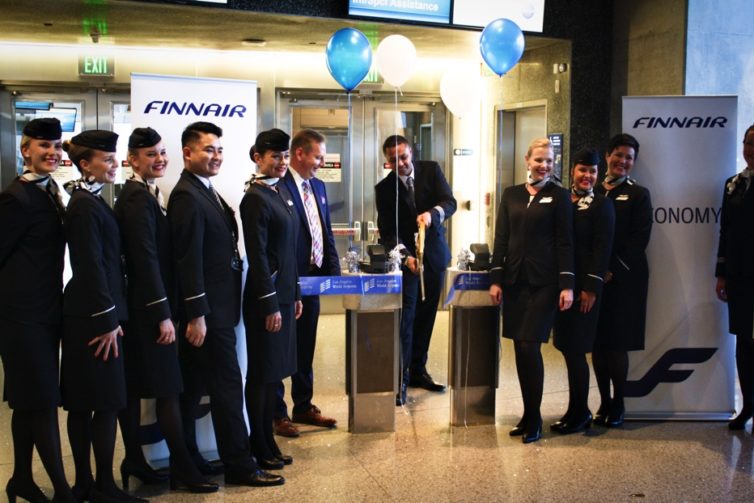
Late last year we spent a fun couple of days flying long-haul with Finnair and interviewing the head of their flagship Airbus A350 fleet. But we never actually flew the A350 ourselves, since Finnair’s US routes were all handled by their older A330s. That changed a month ago, when Finnair re-launched flights to LAX after a long hiatus and gave the honor to the A350. Obviously we weren’t going to miss the chance to cover the inaugural, and the folks at Finnair gave us the chance.
The onboard product lived up to the hype, with universal aisle access, lie-flat seats, Nordic style, and even a northern lights simulation on the ceiling. And it was just as fun covering Finnair’s pre-flight festivities on the ground. Clearly this route was a big deal for the Finnair team, getting the honorific flight numbers AY01 and AY02.
Read on for the full scoop on Finnair’s (re)inaugural celebration of its service from Los Angeles to Helsinki.
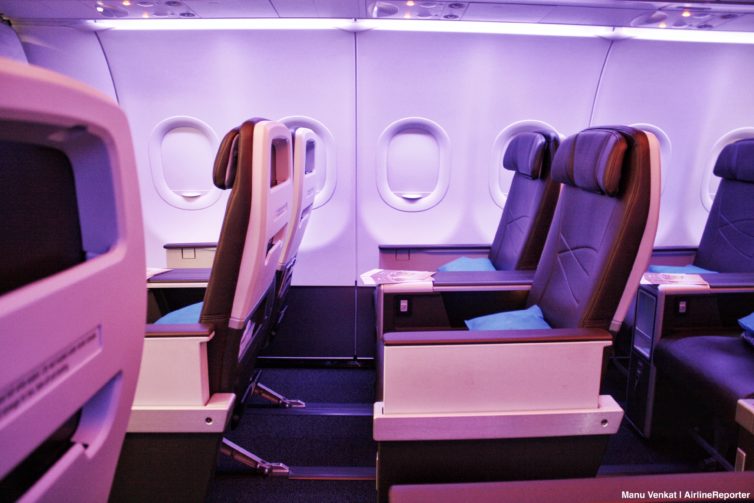
Right plane, right size, right mission. Hit the trifecta and — if you’re an airplane — you’ve earned a fruitful career in your airline’s fleet. Hawaiian Airlines has been flying for a mind-blowing 90 years, and for most if its recent past it’s had two sides to its fleet: big double-aisle aircraft like the Airbus A330 and Boeing 767 (recently retired) for long-haul flights to the Hawaiian islands, and smaller single-aisle planes for short hops between the islands.
But over the past few years, led by the U.S. legacy airlines, Alaska, and (most recently) Southwest, we’ve seen an explosion of a new middle market: extended-operations-certified narrow-body (AKA single-aisle) planes connecting the West Coast and the Hawaiian Islands. A lot of those flights hit secondary markets other than Honolulu, like Maui, Kauai, and the big island.
Hawaiian Airlines wanted to get in on that game, and they picked the Airbus A321neo to do it. The fuel-efficient next-gen narrowbody kicked off service with Hawaiian in early 2018, featuring a new premium cabin seat designed for medium-haul flights. And on a recent flight from Oakland to Maui, we put Hawaiian’s newest plane and seat to the test.
Read on as we say aloha to the Hawaiian Airlines A321neo!




